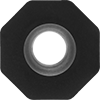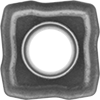Filter by
Cut Type
Cutting Direction
For Use On
Insert Code
Insert Inscribed Circle Diameter (IC)
Inscribed Circle Diameter (IC)
Insert Holder Code
Material
Thickness
Export Control Classification Number (ECCN)
Finish
Component
Insert Thickness
Fabricating and Machining
Fastening and Joining
Containers, Storage, and Furniture
















































